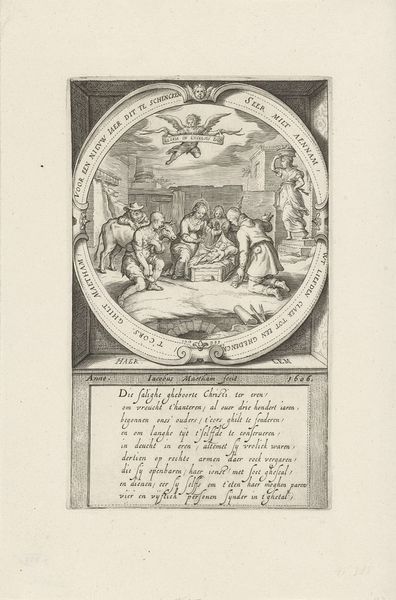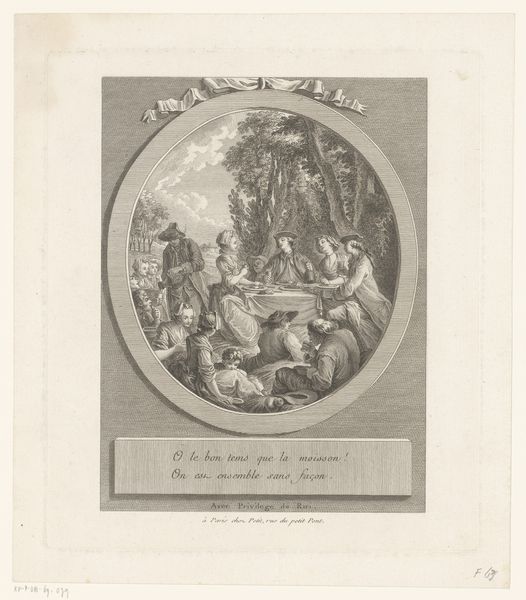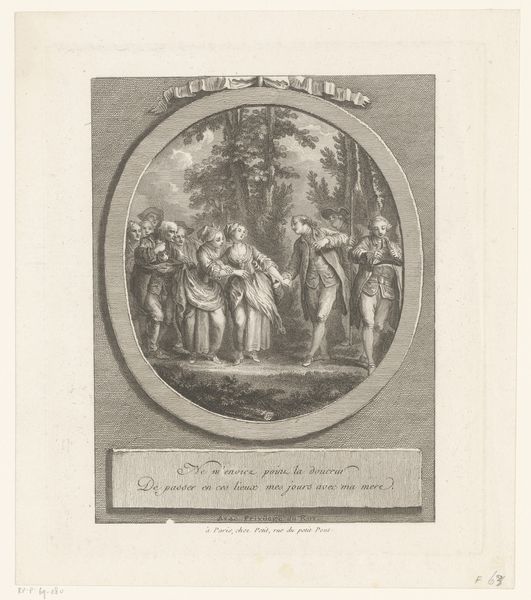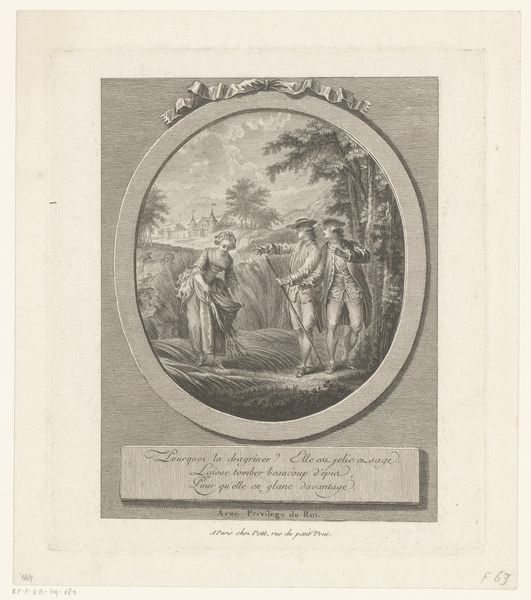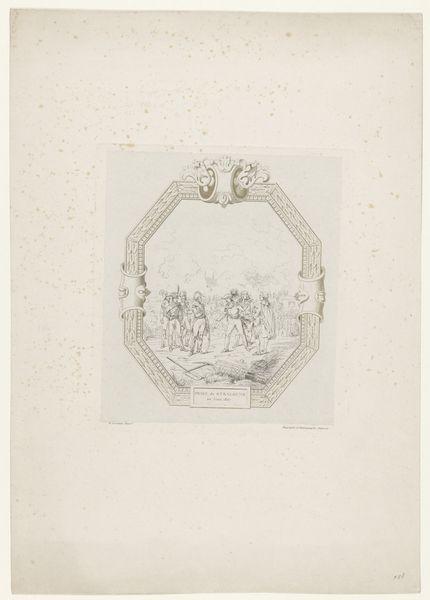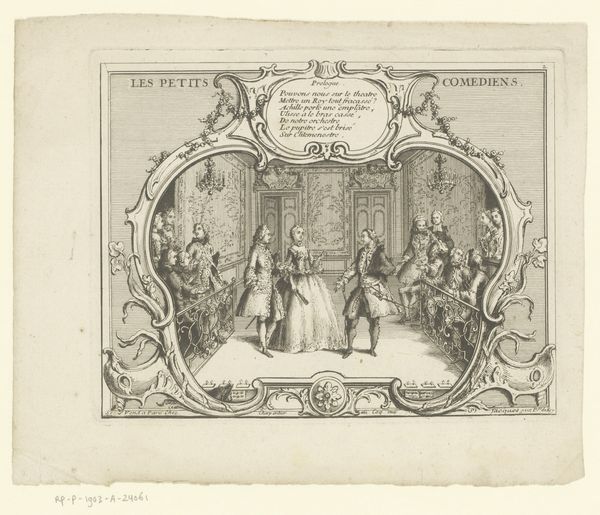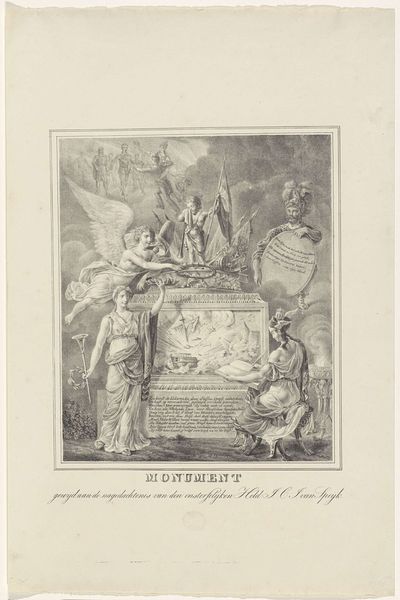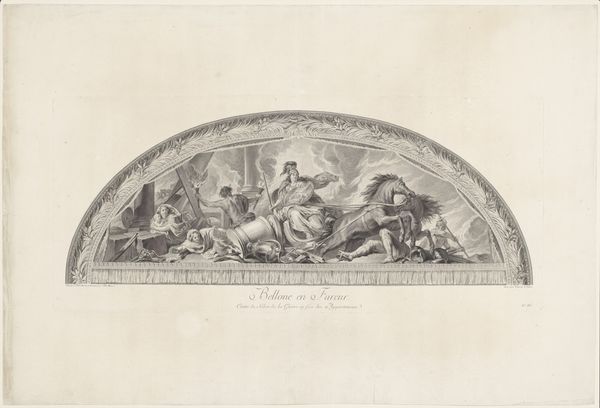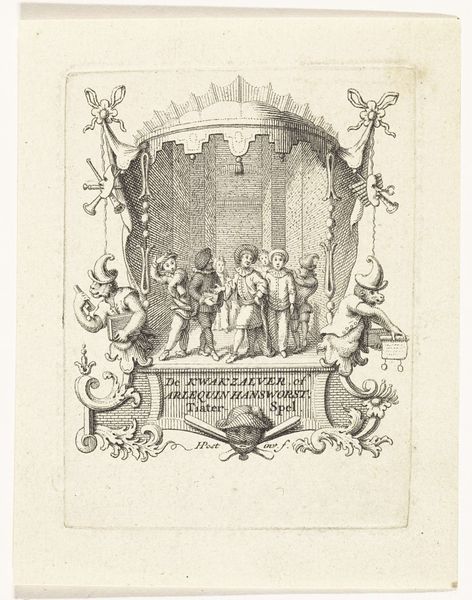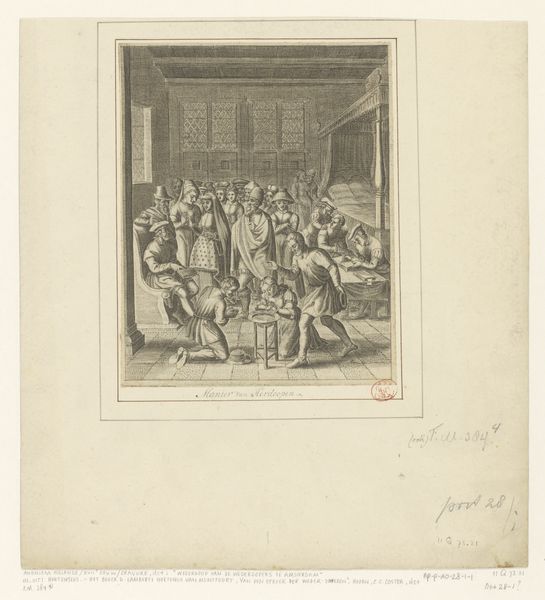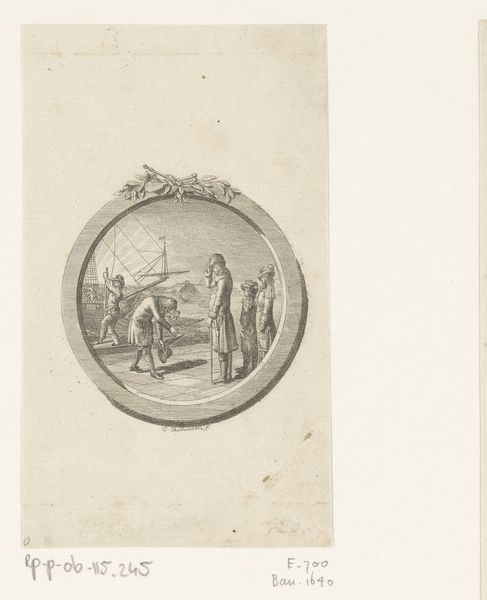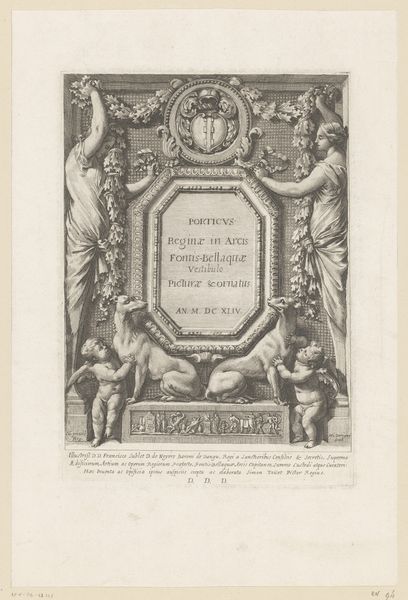
graphic-art, print, etching
#
graphic-art
#
medieval
#
narrative-art
# print
#
etching
#
etching
#
11_renaissance
Dimensions: height 245 mm, width 163 mm
Copyright: Rijks Museum: Open Domain
This photograph by Willem Tinker captures the Haarlemse Kerstgilde's New Year print from 1606. It's a reproduction, of course; the original would have been an engraving, a process involving meticulous labor. Engraving is a subtractive process, demanding skill and precision. The original artist would have used a tool called a burin to incise lines into a metal plate, likely copper. Ink would then be applied to the plate, filling the grooves, and the surface wiped clean. When paper was pressed against the plate, the ink transferred, creating the image. Consider the social context of this technique, how it allowed for the mass production of images and the dissemination of ideas. The Haarlemse Kerstgilde, a Christmas guild, likely used this print as a means of celebrating the new year, reinforcing their community identity. The choice of engraving also reflects the value placed on craft and skill in the 17th century. By engaging with this labor-intensive process, the artist elevated the status of the image, distinguishing it from other forms of reproduction. It's a reminder that the materials and methods used in art-making are never neutral; they always carry social and cultural significance.
Comments
No comments
Be the first to comment and join the conversation on the ultimate creative platform.
